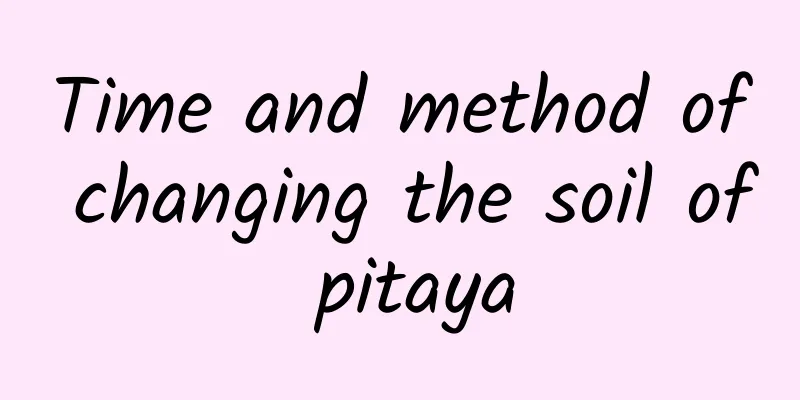Causes of Deformed Tomato Fruits (Main Prevention and Control Measures for Deformed Tomato Fruits)

1. Tomato flower bud differentiation problemThere are two types of poor flower bud differentiation in tomatoes: excessive flower bud differentiation and incomplete flower bud differentiation. The fruits formed by deformed flowers are all deformed fruits. The main reason for the formation of deformed flowers is that the temperature is too high or too low during the differentiation of flower buds in the seedling stage . When tomatoes grow 2 to 7 true leaves, they differentiate into 1 to 3 spikes of flowers, 8 to 11 leaves differentiate into 4 to 6 spikes of flowers, and 12 leaves differentiate into 7 or more spikes of flowers. If the night temperature in the greenhouse is below 10 degrees for a long time in winter and spring, abnormal cell development will cause excessive differentiation and incomplete differentiation. A normal tomato flower has 5-7 petals. Flowers with more than 8 petals have excessive flower bud differentiation and can grow into overly large, multi-ventricular, deformed fruits. Sufficient water and excessive nitrogen fertilization can also easily lead to excessive differentiation of flower buds and produce deformed fruits. Fruits formed by incomplete flower bud differentiation are prone to cracking at the top, exposing the seeds from the ventricle, becoming dehiscent fruits. The lack of trace elements such as calcium and boron can lead to poor differentiation of flower buds and cause deformed fruits. 2. Affected by different concentrations of dipping liquidIn order to increase the fruit setting rate, 2,4-D or tomato spirit is generally used for flower dipping treatment in production. If the concentration is not used properly, especially when the concentration is too high or the flowers are dipped repeatedly, the tomato fruit will develop abnormally and pointed fruits are likely to appear . If the temperature is too high when dipping the flowers, it is also easy to cause the concentration of the dipping liquid to be too high, resulting in deformed fruits. What measures should be taken to prevent the occurrence of deformed fruit?1. When planting in greenhouses in winter, choose varieties that are resistant to low temperatures and weak light , so that deformed fruits are less likely to occur. 2. Do a good job of regulating the temperature in the greenhouse to provide good conditions for flower bud differentiation. The greenhouse temperature should be 20-30℃ during the day and 12-15℃ at night. Avoiding low night temperatures can effectively prevent poor flower bud differentiation. 3. Apply fertilizers reasonably to ensure the supply of nitrogen, phosphorus, potassium, calcium, boron and other major, medium and trace elements to meet the needs of crop growth. 4. Accurately master the dipping technique . Strictly control the dipping concentration. Slightly reduce the concentration when the temperature is high, and increase the concentration appropriately when the temperature is low. Do not dip the flowers repeatedly; the best time to dip the flowers is the day when the tomatoes bloom. It is not good to dip them too early or too late. 5. When deformed fruits are found, they should be removed in time to avoid competition for nutrients and affecting the normal development of flowers and fruits. |
<<: When to harvest winter cabbage (how to harvest and store winter cabbage)
>>: What's the matter with the golden edges on cucumber leaves?
Recommend
How to propagate violets
1. Method Seed propagation 2. Time Available from...
Cultivation and shaping techniques of bonsai of old persimmon
1. Seed propagation After the fifteenth day of th...
What to do if the leaves of the pine tree turn yellow
1. Reasons illumination Light is a very important...
Why is it difficult for a single orchid seedling to survive? How to cultivate it to survive
1. Why is it difficult for a single orchid seedli...
Why do gardenias drop their buds?
1. Too much light Reason: If gardenia is exposed ...
Green plant maintenance knowledge and methods
1. Watering Most green plants prefer a slightly m...
Cultivation methods and precautions of date palm trees
1. Land preparation and ridge making When prepari...
How to grow blueberries
1. Basic Introduction Bilberry mainly grows in Eu...
Cultivation methods and precautions of Araucaria heterophylla
Araucaria heterophylla is a relatively easy plant...
What fertilizer is good for watermelon topdressing?
Time for topdressing watermelon The first fertili...
What is wood ear vegetable
What is wood ear vegetable Auricularia auricula i...
When is the lilac flowering season?
1. Flowering period There are many varieties of l...
Can ginkgo leaves be used as flower soil? Ginkgo leaf humus soil can grow flowers
Can ginkgo leaves be used as flower soil? Ginkgo ...
How to grow camellia well?
Camellia is a popular plant known for its elegant...
Cultivation methods and precautions of water-grown peace bamboo
1. Breeding methods 1. Light: It is a light-lovin...









